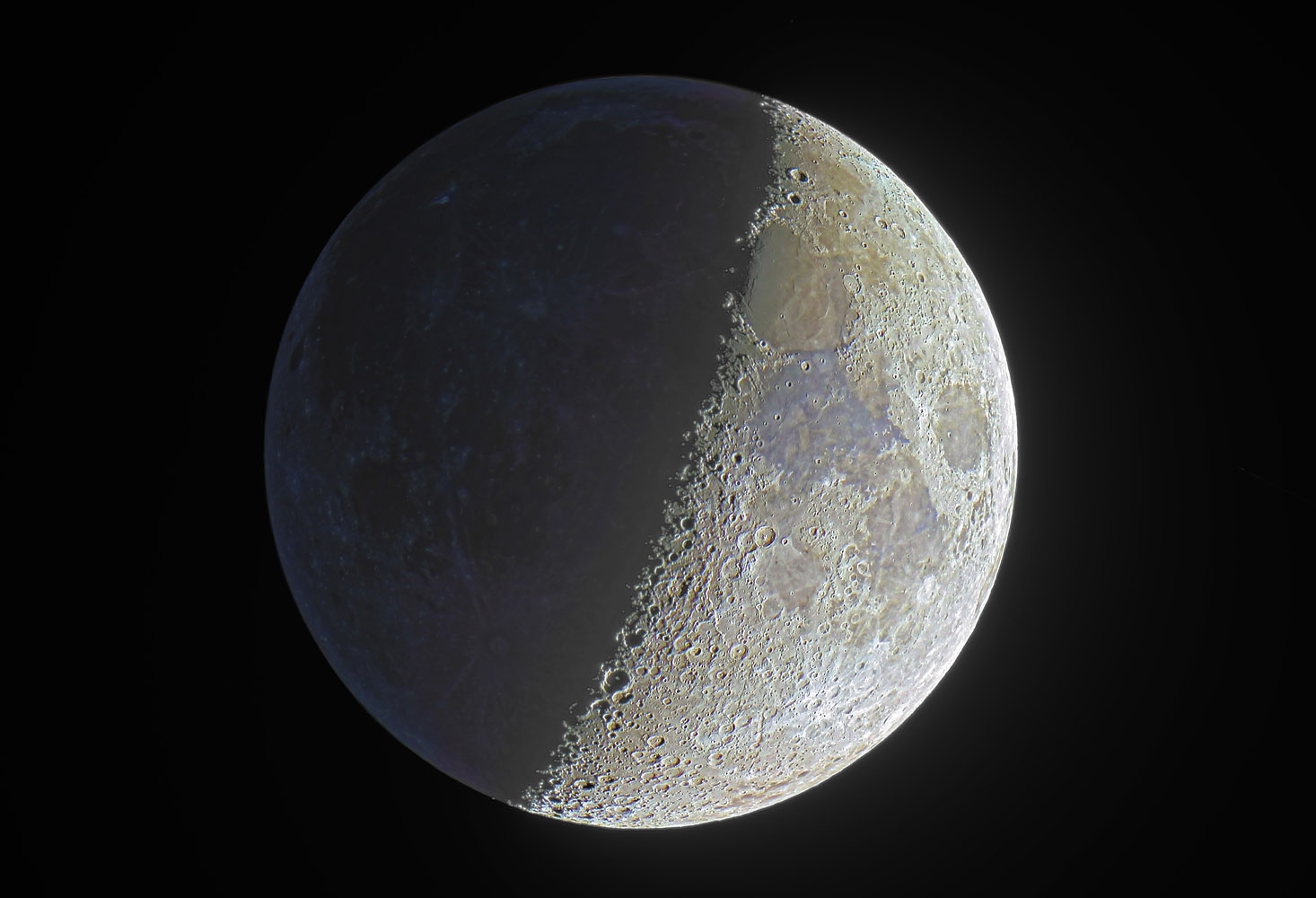Difference between revisions of "December 3, 2013"
| Line 11: | Line 11: | ||
limb - I wonder if that is a real coloration of Orientale ejecta? On the Sun-lit side the blue-gray, titanium-rich lavas of Mare Tranquillitatis seem to be rise above | limb - I wonder if that is a real coloration of Orientale ejecta? On the Sun-lit side the blue-gray, titanium-rich lavas of Mare Tranquillitatis seem to be rise above | ||
the surface. Their well known boundary with the red, here brownish, lavas of Mare Serenitatis appears quite abrupt, as we know it is from Apollo [http://zooniverse-resources.s3.amazonaws.com/blogs.zooniverse.org/4/files/2010/07/Screen-shot-2010-07-24-at-15.01.10.png images]. | the surface. Their well known boundary with the red, here brownish, lavas of Mare Serenitatis appears quite abrupt, as we know it is from Apollo [http://zooniverse-resources.s3.amazonaws.com/blogs.zooniverse.org/4/files/2010/07/Screen-shot-2010-07-24-at-15.01.10.png images]. | ||
| − | Windows, or <em>kipukas</em> to use a Hawaiian word favored by volcanologists, show up at left center of Serenitatis, explaining the sharp curved [http://lpod. | + | Windows, or <em>kipukas</em> to use a Hawaiian word favored by volcanologists, show up at left center of Serenitatis, explaining the sharp curved [http://www2.lpod.org/wiki/July_31,_2012 boundary] of lavas |
associated with Lamont. Some patches of blue-gray lavas crop out along the eastern edge of Fecunditatis and perhaps also towards the southwest of that mare. | associated with Lamont. Some patches of blue-gray lavas crop out along the eastern edge of Fecunditatis and perhaps also towards the southwest of that mare. | ||
Note that the Australe lavas are brown, in fact, even browner than those in <span style="line-height: 1.5;">Serenitatis. I hope Max and others will continue these experiments. The Imbrium </span> | Note that the Australe lavas are brown, in fact, even browner than those in <span style="line-height: 1.5;">Serenitatis. I hope Max and others will continue these experiments. The Imbrium </span> | ||
Latest revision as of 07:25, 28 October 2018
Digitally Painted Mistress of the Night

image by Maximilian Teodorescu, Cota 1000 (SInaia), Romania
See anything odd about this first quarter image? Note how much detail is visible in the Earthshine portion, and the good exposure all across the sunny side.
That is because Max used software to capture and produce a High Dynamic Range saturated-color image that uses a series of exposures to supply detail in
bright and dark areas and everything in between. Max notes that the Earthshine side has a blue cast, and I can just glimpse it, especially along the southwest
limb - I wonder if that is a real coloration of Orientale ejecta? On the Sun-lit side the blue-gray, titanium-rich lavas of Mare Tranquillitatis seem to be rise above
the surface. Their well known boundary with the red, here brownish, lavas of Mare Serenitatis appears quite abrupt, as we know it is from Apollo images.
Windows, or kipukas to use a Hawaiian word favored by volcanologists, show up at left center of Serenitatis, explaining the sharp curved boundary of lavas
associated with Lamont. Some patches of blue-gray lavas crop out along the eastern edge of Fecunditatis and perhaps also towards the southwest of that mare.
Note that the Australe lavas are brown, in fact, even browner than those in Serenitatis. I hope Max and others will continue these experiments. The Imbrium
color contrasts should be spectacular.
Chuck Wood
Technical Details
115mm F/7 APO Refractor, Canon 550D, ISO 100. 174 frames were processed for the finale image, with exposure times ranging from 5 seconds to 1/160s.
Related Links
Max's webpage
Yesterday's LPOD: Yahoo for Yutu
Tomorrow's LPOD: Down, Up, And Down the Alpine Valley
COMMENTS?
Register, Log in, and join in the comments.



